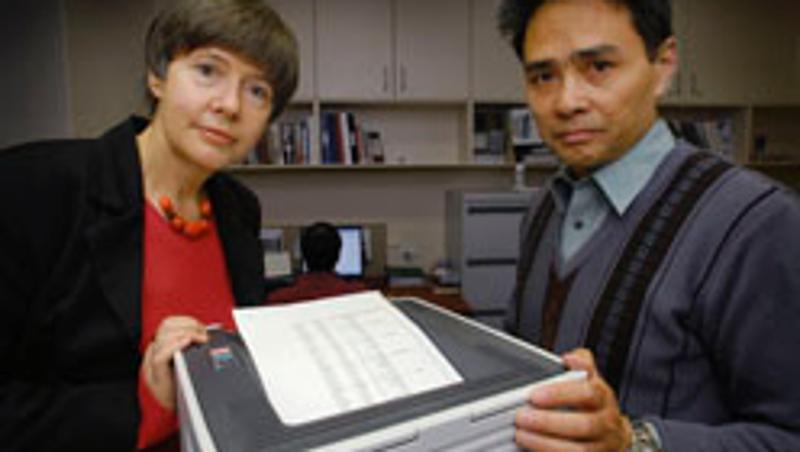
The tiny particles emitted from some home or office laser printer are as dangerous to human health as inhaling cigarette smoke, according to a new study by Queensland University of Technology.
The study, which was conducted by Professor Lidia Morawska from QUT's International Laboratory for Air Quality and Health, found that out of 62 laser printers tested, 17 were "high particle emitters".
Professor Morawska said these 17 printers were releasing potentially dangerous levels of tiny toner-like material into the air.
The results of the study are being published in the latest edition of the American Chemical Society's Environmental Science and Technology journal.
"Most of the particles detected in the study were ultrafine particles," Professor Morawska said. "Ultrafine particles are of most concern because they can penetrate deep into the lungs where they can pose a significant health threat.
"The health effects from inhaling ultrafine particles depend on particle composition, but the results can range from respiratory irritation to more severe illness such as cardiovascular problems or cancer."
Professor Morawska said the study, conducted in a large open-plan office building, found indoor particle levels in the office air increased fivefold during work hours due to printer use.
"Printers are a common device in both the home and office environment," she said.
"However, they are a potential source of indoor pollutants producing volatile organic compounds and ozone, as well as particle emissions.
"This study showed that printers were the most significant source of particle number concentrations in the office building."
Professor Morawska said in general the study found that printers emitted more particles when the toner cartridge was new, and when printing graphics and images as they require greater quantities of toner.
"It appears that there are large differences in the emission levels between different types of printers," she said.
"Many factors, such as printer model, printer age, cartridge model and cartridge age may affect the particle emission process."
Professor Morawska said the study highlighted a need for governments to regulate particle emissions from laser printers.
"Governments regulate emission levels from outdoor devices such as vehicles, power stations and factories, so why not for printers?" she said.
"Until something is done, I suggest that people ensure rooms in offices and homes are well ventilated to allow the airborne particles to disperse."
Media contact - Sandra Hutchinson, QUT media officer, 07 3138 2130 or s3.hutchinson@qut.edu.au
**A high resolution photo is available for media use


